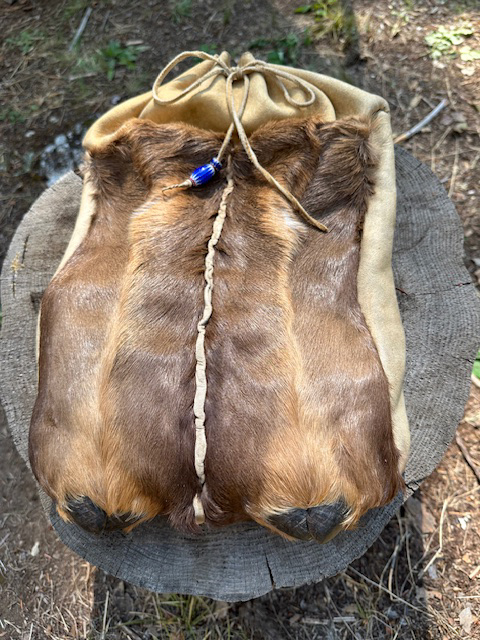By Karie Lee Knoke
Cover photo courtesy of Karie Lee Knoke
As summer wanes, giving way to the onset of fall, the last of the summer orchestra of songbirds migrate towards another symphonic performance in the south. The residential birds of winter, the juncos, chickadees and nuthatches, reclaim the forest, collecting seeds that will sustain them throughout winter. The squirrels are in squirrel mode, caching their stashes of nuts, pinecones and mushrooms.
We too go into squirrel mode as we reap what we sowed in our garden and start putting up food for the winter. Here in the Inland Pacific Northwest, for some of us, filling our freezers with wild game is just a part of what we do to feed our families and has been for generations. Hunting and gathering is part of our ancestral roots.
With the onset of modern conveniences and factory farms, there has been a huge disconnect between us and the food that we eat. But for those who hunt and grow their own food, there is a deep appreciation and connection, knowing where their food comes from and the hard work it took to put it on the table.
With hunting season upon us, many are preparing for the annual task of bringing home some meat and filling the freezer. Taking an animal’s life is not an easy task. It is a sacred endeavor that takes time, skill, respect and responsibility. Our ancestors depended on hunting and used every part of the animal to not only feed themselves, but to make clothes, tools, musical instruments, and more.

Holistic animal processing is more than just separating muscle groups and wrapping them up for roasts and burger, it is the art and wisdom of using the whole animal so that nothing goes to waste. Bones can be cut up for bone broth or shaped into handy tools, such as an awl, needles, or a handle for a knife. Did you know that the knee bone of an elk is a highly sought-after tool for a bow drill kit to make fire?
The sinew (tendon which connects the muscle to bone) is super useful for binding. Broken down into thin strings, sinew makes a strong thread for sewing or binding a stone knife blade to a bone or antler handle. It’s super strong and shrinks when it dries, cinching up the bone around the blade.
Of course, there is the age-old technique that my ancestors used of making buckskin or bark tanned leather out of deer hides for making clothes or a saddle bag or whatever they needed. It is nature’s material.
The hide of the forelegs of any furry ungulate can be made into beautiful hock bags or a purse. I made a backpack with Elk hocks and it formed to fit my back, comfortable and fashionable.
When carefully harvesting an animal, you can collect the blood before it coagulates to make blood sausage, which is stuffed into well-cleaned intestines. Or blood pudding baked inside of the stomach lining. The Swedish folks make Haggis, which is a savory pudding made of the sheep’s organs and spices, baked inside of a sheep stomach. I’ve heard that roasted Moose head and boiled Moose tongue is a favorite amongst the Yukon folks.
I know these may be out-of-the-norm meals for many of us and may sound kind of gross to unadventurous pallets, but believe me, they are quite delicious! During my time on “Alone,” I discovered the importance of eating the whole animal and how scrumptious and fatty the heads are.
Have you ever seen the inside of a goat stomach? It has a beautiful six-sided design, similar to a honeycomb, that can be bark tanned and made into a satchel. And the hooves of a deer are commonly made into rattles, not to mention that the hide could be turned into rawhide for making a drum or a container.
As you can see, one animal will give you more than just food on the table, but an abundance of other handy items. Using the whole animal gives a new life to its body as well as giving life to your family. I am grateful for the gifts that each animal provides.
I hope that you all have a great season of foraging and finding food for your families. And, most of all, enjoy the fall fresh air!
Karie Lee Knoke is a wilderness/primitive skills instructor and founder of Sacred Cedars Wilderness School. She was a contestant on the reality survival TV show, Alone Season 9, on the History Channel. Go to www.karieleeknoke.com for more information, or follow her on Facebook @SacredCedarsWildernessSchool or Instagram @karie_lee_knoke













